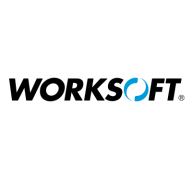

OpenText Functional Testing and Worksoft Certify compete in the test automation category. Based on the comparison, Worksoft Certify seems to have an advantage due to its codeless automation feature, which allows ease of use for non-technical users.
Features: OpenText Functional Testing is notable for its support across multiple platforms and technologies, comprehensive object recognition, and robust automation frameworks that include both GUI and API testing. Worksoft Certify shines in SAP environments with its codeless automation, allowing users without technical skills to develop scripts easily. It also offers seamless integration with multiple applications, which is a significant advantage.
Room for Improvement: OpenText Functional Testing could enhance support for modern scripting languages, improve browser compatibility, and offer better report customization while aiming to reduce its memory usage. Worksoft Certify could improve dynamic web object identification, enhance integration with CI/CD pipelines, and expand mobile automation capabilities while providing faster technical support response times.
Ease of Deployment and Customer Service: OpenText Functional Testing is mainly deployed on-premises or in private clouds, with customer feedback pointing to effective but sometimes slow service. Worksoft Certify offers versatile deployment options, including on-premises, hybrid, and public clouds. It receives positive reviews for its prompt and efficient customer service, especially concerning its SAP integration.
Pricing and ROI: OpenText Functional Testing is known for its high licensing costs, although it promises significant ROI by minimizing manual testing. Some users, however, find its licensing model complex and costly. Worksoft Certify is also considered expensive but delivers robust ROI, particularly for extensive SAP deployments. It facilitates substantial automation advantages by enabling non-technical users to efficiently automate processes.
Automation is done very fast, leading to improvements in the QA process and reducing the time needed for test automation.
The development time using UFT can be cut down into half as compared to coding from scratch.
We can easily achieve a return on investment in one, two, or three years.
It brings measurable benefits, and I have observed time-saving, cost-saving, and resource-saving aspects with Worksoft Certify.
Where we used to require twelve to twenty manual resources, we now only need four resources to perform the testing efforts.
I can confirm that Worksoft Certify brings measurable benefits in terms of cost saving, time saving, resource saving, and efficiency improvements in my projects.
Support cases are easily created and attended to promptly, depending on urgency.
After creating a ticket, it takes three to five days for them to acknowledge it and then send it to somebody.
The technical support is rated eight out of ten.
If the L1 support cannot handle the issues, their L2 support is very good, as technical people come and solve the problems.
Their technical support is responsive, which is good, and their solutions are timely.
If we could have direct contact through platforms like Teams for any immediate queries, it would save the tester's time.
Running them in parallel allows you to consume multiple runtime licenses and just execute the tests that don't have conflicting priorities and get through a lot of volume much quicker.
The tool can be installed on all computers used by developers or test automation engineers.
We are an enterprise company. It covers companies of all sizes.
I would assess the scalability of Worksoft Certify as around eight to nine, as it is designed for larger teams and complex environments, facilitating efficient testing and deployment.
When I need to add additional resources to scale up, it is easy to do so to run more tests.
One of the key stability issues was that Windows would consume memory without releasing it, leading to regression testing crashes.
Regarding stability, I have not seen any lagging, crashing, or downtime with Worksoft Certify; it is very stable nowadays.
It depends on where this particular tool is installed, including the RAM size or the disk size of that machine.
Throughout my experience, I have not encountered any crashes, performance issues, or stability issues with Worksoft Certify.
Incorporating behavior-driven development tests would enhance the capabilities of UFT One.
If it could move closer to a no-code or low-code solution, it might dominate the market again.
We frequently encountered stability issues when the browser dependency caused Windows to consume memory without releasing it, leading to crashes during regression testing.
Focusing more on AI and its integration with Worksoft would really help enhance our processes.
They need to keep working on the mobile interface, the API part, and they need to improve more on web applications.
Immediate contact to a concerned team or person should be established so that the issue can be fixed at a better pace.
It's cheaper than Tricentis Tosca but more expensive than some others.
The pricing or licensing policy of OpenText is a bit expensive, however, it's one of the best solutions in the market.
There are many open-source tools with no cost, and there are no-code tools that are less expensive than UFT.
As it is a quality tool, the price is slightly higher, but that is acceptable compared to other tools, especially considering the ROI.
The pricing is minimal and moderate.
I think the pricing for Worksoft Certify is cheaper compared to other tools.
UFT supports Oracle, SAP, PeopleSoft, and other non-web applications, making automation feasible.
The object repository is one of the best in the market, allowing creation of a repository useful for all tests.
OpenText UFT One offered valuable features by allowing us to build up libraries to streamline repetitive tasks, making scripting much easier.
Teams who are planning for automation and are still in manual testing can use Worksoft Certify, and significant time and resources will be reduced.
I believe it will reduce cycle time; we can save 30 to 40%, even 40 to 60% regression cycle time, with innovations we have implemented with Worksoft Certify.
It also covers end-to-end testing across different applications, enabling testing of complete business processes, and integrates with other applications such as SAP, Oracle, and Salesforce.
| Product | Market Share (%) |
|---|---|
| OpenText Functional Testing | 7.9% |
| Worksoft Certify | 3.9% |
| Other | 88.2% |


| Company Size | Count |
|---|---|
| Small Business | 20 |
| Midsize Enterprise | 13 |
| Large Enterprise | 71 |
| Company Size | Count |
|---|---|
| Small Business | 11 |
| Midsize Enterprise | 6 |
| Large Enterprise | 64 |
OpenText Functional Testing provides automated testing with compatibility across technologies, browsers, and platforms. It targets APIs, GUIs, and applications like SAP and Oracle for efficient test automation, emphasizing usability and integration with tools such as Jenkins and ALM.
OpenText Functional Testing offers wide-ranging automation capabilities for functional and regression testing, API testing, and automation across web, desktop, and mainframe applications. It supports script recording and object identification, appealing to less technical users. Despite its advantages, it grapples with memory issues, stability concerns, and a challenging scripting environment. Its VBScript reliance limits flexibility, generating demand for enhanced language support and speed improvement. Users appreciate its role in continuous integration and deployment processes, managing test data efficiently, and reducing manual testing efforts.
What are the key features of OpenText Functional Testing?In industries like finance and healthcare, OpenText Functional Testing is leveraged for end-to-end automation, ensuring streamlined processes and accuracy in testing. Many companies utilize it for efficient test data management and integrating testing within continuous integration/deployment operations.
Worksoft Certify offers codeless automation for efficient test scripting by non-programmers. It integrates with SAP, supports multiple interfaces, and ensures seamless end-to-end testing, facilitating time savings and streamlined operations.
Worksoft Certify stands out for its unique codeless automation capabilities, enabling users without programming skills to easily create automated test scripts. Its Capture feature effortlessly records user actions, accelerating test development. Integration with SAP systems and support across various interfaces make it highly versatile. The tool's architecture allows for easy script maintenance and decouples scripts from data, speeding up testing processes while minimizing manual effort. Although it's known for excellence in automating SAP applications, there is room for improvement in areas like web and mobile integration, UI enhancements, and support responsiveness.
What are the key features of Worksoft Certify?In industries relying on SAP and ERP systems, Worksoft Certify serves as a valuable tool for automating regression and integration testing. Organizations benefit from reduced manual testing effort and faster project delivery times. It's extensively utilized in sectors requiring large-scale SAP deployment and cloud application integration, making it integral in streamlining business operations.
We monitor all Test Automation Tools reviews to prevent fraudulent reviews and keep review quality high. We do not post reviews by company employees or direct competitors. We validate each review for authenticity via cross-reference with LinkedIn, and personal follow-up with the reviewer when necessary.